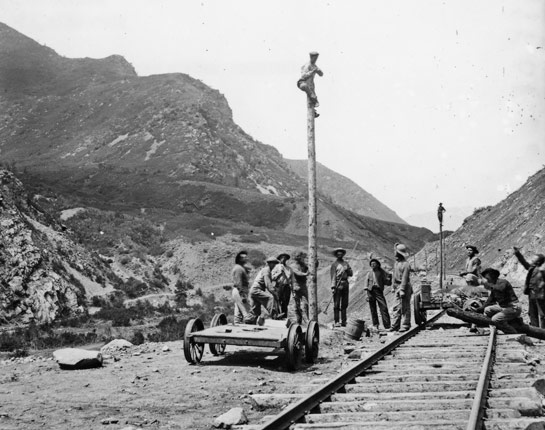“Nothing has been written on this topic which can be considered as decisive–and accordingly we find everywhere men of mechanical genius, of great general acuteness and discriminative understanding, who make no scruple in pronouncing the Automation a pure machine, unconnected with human agency in its movements, and consequently, beyond all comparison, the most astonishing of the inventions of mankind.”
Edgar Allan Poe, “Maelzel’s Chess Player,” 1836 (italics in original)
Since the release of OpenAI’s ChatGPT in November 2022, public interest, entrepreneurial activity, and global investments in artificial intelligence (AI) have exploded.
Global investments are forecasted to reach $200 billion by 2025, and Microsoft is investing up to $13 billion in OpenAI. Google has committed $2 billion to Anthropic (an AI startup) and more on Gemini. And AI companies dominated the most recent batch of Y Combinator, one of the world’s most successful and celebrated startup accelerators.
Saudi Arabia plans to invest $40 billion in the technology. In the past year and a half, the valuation of NVIDIA (makers of chips used for AI applications), Microsoft, and Arista Networks (makers of network-switching technology for data centers) have skyrocketed by more than 457%, 80%, and 85% respectively.
The AI boom is here.
This flood of capital and interest in developing AI-focused products and services has been met with both excitement and trepidation.
On one side of the fence, many investors, entrepreneurs, and tech companies are excited about the technology as they anticipate the coming productivity gains. These gains should result in more efficient companies, superior returns, and a significant competitive advantage in the market. In this wildly optimistic scenario, disease, sickness, hunger, and many other societal ills will be relics of the past.
On the other side are those who worry about AI’s impact on work, jobs, and humanity overall. AI is set to impact 40% of jobs globally and up to 60% in some countries.
Nick Bostrom, a Swedish philosopher at Oxford’s Future of Humanity Institute, writes that “we humans are like small children playing with a bomb,” referring to our experiments with and investments in AI. More existential than climate change, a global pandemic, or nuclear war, Bostrom believes (and has calculated) that advances in AI are more likely to render humans extinct.
Regardless of which side of the metaphorical AI fence you find yourself on, one thing is clear: the world is speeding down the AI superhighway with no one really knowing exactly how advancements in this technology will impact society in the short and long term.
As a result, it’s important we slow down and ask ourselves if and how AI can advance global prosperity. To do that, we must first understand the intricate link between technology and prosperity.
Technology’s winding path to creating prosperity for many (not just some)
To understand the link between technology and prosperity, it’s helpful to examine historical precedent. Specifically, there are two critical hurdles in ensuring that technology eventually yields prosperity: democratization and safety and security (i.e., health safety, physical safety, and economic security).
In their book, Power and Progress: Our 1,000-Year Struggle Over Technology and Prosperity, Daron Acemoglu and Simon Johnson provide compelling evidence that the path from an invention to prosperity for many via democratization is often not the most direct path.
When a new technology is introduced, its gains often accrue to the wealthy and those with the ability and resources to access it. The path to widespread prosperity is typically plagued by significant efforts by workers and citizens and a few visionary leaders to share the gains from the technology with as many in society as possible.
Acemoglu and Johnson also show that, in many cases, new technologies can have harmful safety and security effects on workers and society, as they tend to exacerbate inequality, increase pollution, and reduce standards of living.
For example, they cite the proliferation of coal as a fuel to power the Industrial Revolution as having caused widespread pollution and premature deaths in London, Birmingham, and other cities in the United Kingdom (UK). As trains grew in popularity in the US, so did accidents, train wrecks, and deaths. Many other examples abound, illustrating how new technologies can cause great societal harm.
But technology can (eventually) lead to more widespread prosperity, which is why every country is embracing more technology while increasing investments in innovation. Here’s how history has addressed these two main challenges.
Safety and security
Unfortunately, in many historical examples, it’s only after disastrous effects have been experienced and analyzed that regulatory action follows…sometimes decades upon decades later, if at all.
Take, for example, the US railroad system noted above. Railroads began in the Northeast at the beginning of the 1820s, but it wasn’t until 1887 that Congress passed the Interstate Commerce Act, making railroads the first industry subject to federal regulation. Congress passed the law largely in response to decades of public demand that railroad operations be regulated. It wasn’t until 1966 that the Federal Railroad Administration (FRA)—enabling safety and reliability—was created by the Department of Transportation Act.

Credit: The Andrew J. Russell Collection, The Oakland Museum of California
Two centuries later, the use of coal (along with other fossil fuels) is still undergoing regulation to this day. However, during the UK’s 2015 election, all parties committed to the closure of coal stations to reduce emissions. The last coal station in the UK is due to come offline this year (2024).
In considering the potentially negative effects of an AI-powered world, it may be in the best interest of its citizens for governments and associated agencies to introduce guardrails now. While these proactive measures will need to be iterated and changed over time, they could help steer entrepreneurs and innovative companies and organizations now in offering the most effective product or service possible for the greatest number of people and, ultimately, spur scale rather than hindering it due to safety and security concerns.
Democratization
Along with safety and security considerations, for technology to yield prosperity—more access for more people—and not just maintain the status quo, entrepreneurs, investors, and policymakers must prioritize one specific type of disruptive innovation: market-creating innovations (MCIs).
Market-creating innovations transform complicated and expensive products into simple and affordable ones so many more people can have access to the products. MCIs are more than just a product or service—they are an entirely new system designed to serve people who historically didn’t have access to a product.
A simple example of an MCI is the proliferation of mobile phones globally, especially in low- and middle-income countries. From the wealthy and connected to the impoverished and remote, mobile phone technology is accessible to most people globally…and the impact has been immense. In 2022 alone, mobile technologies and services generated $5.2 trillion of economic value and supported 28 million jobs.
How did technology like mobile phones transform society when so many other technologies failed to do so? The process of market creation, which usually goes through three phases, is the first part of the answer.
You can read more in-depth about the three phases in this blog, but democratization occurs in phase three after the discovery (phase one) and the distribution mechanism (phase two).
Democratization happens when a discovery is deemed essential enough, usually by the government or multilateral organizations such as the United Nations, that it becomes subsidized—often by governments or large philanthropic organizations—for those who cannot afford it. For example, free universal education, free health care, and other initiatives are democratization efforts designed to create a more just and equitable society.
There are many powerful examples in US history, such as cars and smartphones, that illustrate the process of market creation, but let’s look at the most potent example: electricity.
Powering America with Electricity
The first practical use of electricity and the rise of the industry in America came with Thomas Edison’s invention of the light bulb. Although Edison received a patent for his electric lamp in 1880, it wasn’t until he partnered with financier J.P. Morgan that the industry slowly began to take root. One of the first major initiatives was the Pearl Street Station, the first central power plant in the US.
At first, electricity was limited to the privileged few in the city of Manhattan, and Pearl Street Station came with more challenges than benefits. For Edison, the greatest challenge was the costly and dangerous construction of the elaborate network of wires and underground tubes. This led to such high initial investments that the plant was actually a money-losing business for several years. For consumers and workers, negative consequences of early electricity use included electrocution, pollution, and lack of health and safety practices.
However, as the plant and Edison’s electricity company, subsequently General Electric, became profitable, others, particularly Samuel Insull—one of Edison’s colleagues—saw the opportunity to distribute this technology to millions of people across the country. Where Edison prioritized discovery, Insull focused on distribution.
It was through Insull’s successful targeting of nonconsumers—Americans who didn’t have access to electricity due to geographical and monetary barriers—that electricity became accessible to more and more people, enabling progress in multiple other ways. Insull’s successful development of the power grid, economies of scale, and targeted pricing schemes helped both his company, Chicago Edison, and the nonconsumers of electricity in the US. Thousands of nonconsumers became consumers, enabling safer lighting alternatives, longer hours of productivity, and the expansion of industries. In doing so, Chicago Edison reached revenues of nearly $40 million in 1920, with 6,000 employees serving about 500,000 customers.
The widespread distribution of electricity had an immense positive impact not only on Chicago Edison and its employees and customers but on American society as a whole. From the discovery and distribution of electricity, numerous other industries and workforces emerged in transportation, manufacturing, telecommunications, and even agriculture. The distribution of electricity fostered entrepreneurship and further technological advancements, partially made possible by the value generated from property taxes, excise taxes, income taxes, franchise fees, and regulatory fees. Access to electricity came with improved standards of living, and after a few decades of the diffusion of the technology throughout the country, Franklin Roosevelt declared, “Electricity is a modern necessity of life. That necessity ought to be found in every village, in every home and on every farm in every part of the United States,” instigating the democratization phase.
In 1936, the US federal government passed The Rural Electrification Act. The Act provided federal loans to companies (and later farmer co-ops) for the installation of electrical distribution systems to serve isolated rural areas of the US. This wasn’t only about democratizing access to electricity but also about creating jobs greatly needed during hard economic times. The initiative was successful and created jobs in construction, manufacturing, technical assistance, administration, and management. Access to electricity in farms also skyrocketed from 10% in 1936 to 80% by 1951.
In 2022, the total market capitalization of US investor-owned electric companies was $1,000 billion. Today, the sector is close to generating $500 billion in revenue, and it directly employs over 700,000 people, not including the indirect jobs created in the many other industries it jumpstarted.
Edison “discovered” the technology; Insull focused on the “distribution” of the technology to American nonconsumers, which brought about jobs, societal progress, and prosperity; and Roosevelt and the US government invested in democratization so the gains of the technology could reach everyone in the country. This is the process of market creation. This market creation process isn’t unique to these three technologies. A similar story of market creation and progress plays out, from vaccines, computers, and the Internet to cameras, basic foods, and even sewing machines.
Looking to the past to see the future
After understanding the democratization phase within the process of market creation, entrepreneurs and innovators now have the savvy mindset needed to create the second part of the answer to solving for democratization: developing a successful business model around a technological enabler (like GenAI). Be sure to read part 2 of this piece, “Why AI’s business models will determine its potential to ignite global prosperity.”



